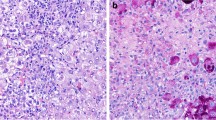Abstract
Objectives
Drug-induced liver injury (DILI) is a common concern. However, data on DILI epidemiology in inpatients are sparse.
Methods
To investigate the incidence of DILI, we screened all patients in the pharmacoepidemiological inpatient database according to the CIOMS (Council for International Organisation of Medical Science) criteria, which consist of the evaluation of some clinical chemistry laboratory liver parameters (CIOMS laboratory criteria) and the exclusion of any disease-related causes for the liver injury. Thus, only cases with probable or certain causality according to the World Health Organization criteria were included.
Results
Among a total of 6383 patients, liver parameters were determined in 4610, and 489 among them fulfilled the CIOMS laboratory criteria. However, 401 patients had to be excluded because of disease-related liver injury and, thus, the study cohort consisted of 4209 patients at risk for DILI. Among a total of 88 DILI cases, 31 had no documented normal baseline liver parameters and, thus, represented prevalent cases. The remaining 57 represented incident DILI cases. Thus, the incidence of DILI was 1.4% (95% CI 1.0, 1.7). The drug classes most frequently causing DILI were heparins, antibacterials, tuberculostatics and antineoplastic agents. Among those, antineoplastic agents and tuberculostatics showed the highest incidence. Liver injury was not mentioned among the diagnoses or in the physician’s discharge letter in about 52–68% of all cases.
Conclusion
Approximately 1 in 100 patients develops DILI during hospitalisation in a department of medicine. Incidences of DILI were highest for antineoplastic agents and tuberculostatics. DILI is frequently missed and, therefore, DILI detection by diagnoses will result in misleadingly low incidence rates.



Similar content being viewed by others
References
Pratt DS, Kaplan MM (2000) Evaluation of abnormal liver-enzyme results in asymptomatic patients. N Engl J Med 342:1266–1271
Lee WM (1995) Drug-induced hepatotoxicity. N Engl J Med 333:1118–1127
Garcia Rodriguez LA, Ruigomez A, Jick H (1997) A review of epidemiologic research on drug-induced acute liver injury using the general practice research data base in the United Kingdom. Pharmacotherapy 17:721–728
Sgro C, Clinard F, Ouazir K et al (2002) Incidence of drug-induced hepatic injuries: a French population-based study. Hepatology 36:451–455
Bagheri H, Michel F, Lapeyre Mestre M et al (2000) Detection and incidence of drug-induced liver injuries in hospital: a prospective analysis from laboratory signals. Br J Clin Pharmacol 50:479–484
Fattinger K, Roos M, Vergeres P et al (2000) Epidemiology of drug exposure and adverse drug reactions in two Swiss departments of internal medicine. Br J Clin Pharmacol 49:158–167
Benichou C (1990) Criteria of drug-induced liver disorders. Report of an international consensus meeting. J Hepatol 11:272–276
Morant J, Ruppaner H (2001) Arzneimittelkompendium der Schweiz. Documed, Basel
O’Grady JG, Lake JR, Howdle PD (2000) Comprehensive clinical hepatology. Mosby, London
Stricker BHC (1992) Drug-induced hepatic injury. Elsevier, Amsterdam
Wissenschaftliche Tabellen Geigy. (1980) CIBA-GEIGY AG, Basel
Thuermann PA, Windecker R, Steffen J et al (2002) Detection of adverse drug reactions in a neurological department: comparison between intensified surveillance and a computer-assisted approach. Drug Saf 25:713–724
Azaz Livshits T, Levy M, Sadan B, Shalit M, Geisslinger G, Brune K (1998) Computerized surveillance of adverse drug reactions in hospital: pilot study. Br J Clin Pharmacol 45:309–314
Dossing M, Sonne J (1993) Drug-induced hepatic disorders. Incidence, management and avoidance. Drug Saf 9:441–449
Oestreicher MK, Desmeules J, Giostra E, Gross B, Hadengue A, Dayer P (1996) Atteintes hepatiques medicamenteuses, il faut y penser! Schweiz Med Wochenschr 126:2094–2096
Begaud B (1990) The liver as the target organ for idiosyncratic reactions. In: Jones CANaJK (ed) Idiosyncratic adverse drug reactions. Elsevier Science Publishers, Amsterdam, B.V., pp 85–97
Perez Gutthann S, Garcia Rodriguez LA (1993) The increased risk of hospitalizations for acute liver injury in a population with exposure to multiple drugs. Epidemiology 4:496–501
Harenberg J, Roebruck P, Heene DL (1996) Subcutaneous low-molecular-weight heparin versus standard heparin and the prevention of thromboembolism in medical inpatients. The heparin study in internal medicine group. Haemostasis 26:127–139
Garcia Rodriguez LA, Stricker BH, Zimmerman HJ (1996) Risk of acute liver injury associated with the combination of amoxicillin and clavulanic acid. Arch Intern Med 156:1327–1332
Gresser U (2001) Amoxicillin-clavulanic acid therapy may be associated with severe side effects—review of the literature. Eur J Med Res 6:139–149
Acknowledgements
The project is supported by a grant from the foundation “Stiftung für Arzneimittelsicherheit/Comprehensive Hospital Drug Monitoring”. The foundation is supported by Glaxo Smith Kline, Novartis, Roche and the Swiss Medical Association (FMH). Karin Fattinger was supported by the Swiss National Science Foundation (grant 3200-065173.01). There are no conflicts of interests related to this work.
Author information
Authors and Affiliations
Corresponding author
Rights and permissions
About this article
Cite this article
Meier, Y., Cavallaro, M., Roos, M. et al. Incidence of drug-induced liver injury in medical inpatients. Eur J Clin Pharmacol 61, 135–143 (2005). https://doi.org/10.1007/s00228-004-0888-z
Received:
Accepted:
Published:
Issue Date:
DOI: https://doi.org/10.1007/s00228-004-0888-z




